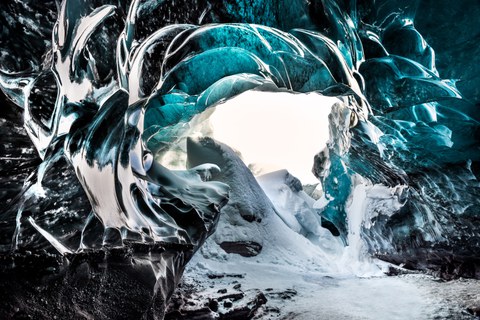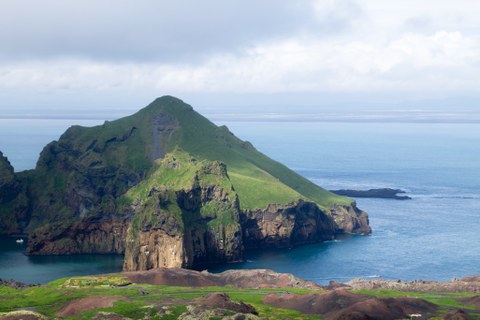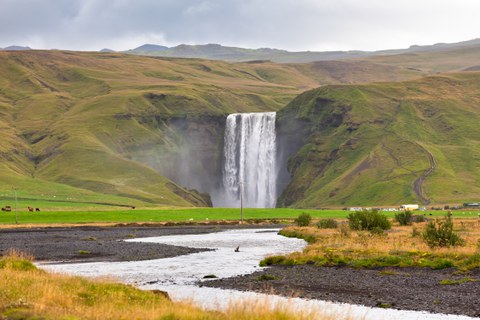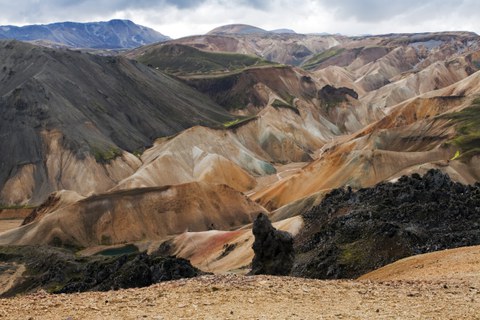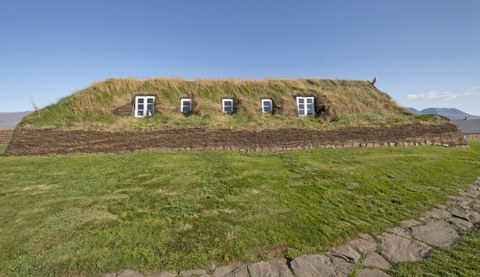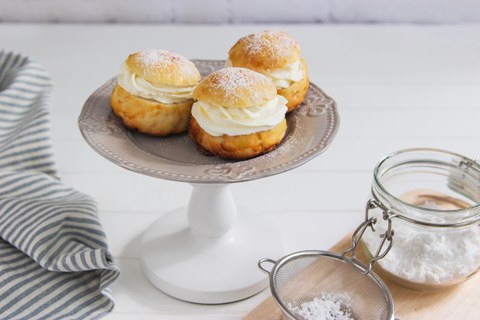Partner Country of the Month January 2022: Iceland
Welcome to the land of ice and fire. With hot springs, geysers and black beaches of basalt sand, volcanic activity is everywhere in Iceland. At the same time, about a tenth of the country is covered by glaciers. You should wrap up thickly in the Icelandic weather, but it's worth it to explore the spectacular nature with over 10,000 waterfalls. Icelandic society is small and informal, with fewer inhabitants than Dresden. Nevertheless, there are surprisingly many well-known Icelandic musicians and plenty of other things to discover.
With the "Partner Country of the Month" campaign, we want to shine a spotlight on the wide diversity of countries, regions and partner universities of TU Dresden that our students can explore during a semester abroad.
Table of contents
General facts and figures about Iceland
Capital: Reykjavík
Population: 361,000
Official languages: Icelandic
National holiday: 17th June (Independence and founding of the Republic of Iceland)
Currency: Icelandic króna (ISK / Kr)
You can find further facts, figures and information on wikipedia or on nationsonline For travel info, see visiticeland.
Language matters
- Hello – Halló
- How are you? – Hvað er títt?
- My name is ... – Ég heiti ...
- Excuse me – Afsakið
- How much is this? – Hversu mikið kostar þetta?
- Thank you – Þakka þér
- Bye – Bless
Icelandic is part of the Scandinavian languages, but is exceptional among them because it has hardly changed since the 9th century. Today's Icelandic is thus very close to the original language of the Vikings and Old Norse sagas. The avoidance of importing foreign words is another special feature. Instead, new Icelandic terms are coined in order to preserve the small language. Would you like an example? The word tölva (computer) is composed of tala (number) and völva (seer).
Many Icelanders are very proficient in speaking English. One reason for this is that Icelandic is little used in online media. Therefore, Icelanders consume a lot of media in English, especially the younger population, and many are at a quasi-native level. Our Icelandic partner university offers a wide range of courses in English - but please inform yourself about the exact requirements before applying.
However, some knowledge of the local language certainly never hurts and will help with immersing yourself in Icelandic culture. In Dresden, there are Icelandic courses at isländisch-lernen.de. An alternative are online courses, e.g. on icelandiconline.com.
Did you know that ....?
- people in Iceland always address each other by their first names? This also applies to superiors, doctors and politicians. Even official registers are structured by first names. Strictly speaking, there are no family names in Iceland. Instead, the patronymic is used (increasingly also the matronymic), consisting of the parent’s first name plus "-daughter" or "-son", in Icelandic "dóttir" or "son". The Icelandic singer Björk Guðmundsdóttir is thus simply called Björk, daughter of Guðmundur.
-
books are the most typical Christmas gift in Iceland? Iceland publishes more books per capita than any other country. They are published and sold mainly in the months before Christmas. After exchanging the presents on Christmas, people snuggle up to read their new books with a cup of hot chocolate.
-
the Vikings are to blame for Iceland's erosion problems? Icelandic nature is known for wild wastelands, certainly not for lush forests - but it hasn’t always been like that. When the Vikings founded the first settlements on the still uninhabited island around the year 900, a quarter of Iceland was covered by forests. The Vikings cleared these for cultivation, but Icelandic nature was more sensitive than expected. As a result, to this day there is hardly any forest in Iceland and the soil is exposed to the elements without protection.
-
Iceland is the largest volcanic island in the world? It continues to grow in width by about 2 cm per year.
-
Iceland's electricity and heating is almost entirely powered by renewable energies? Fossil fuels are virtually only needed for vehicles and transport. Nature makes it easy for the Icelanders, as hydropower and geothermal energy are abundant here. As an example, some streets and pavements in Reykjavík are heated in winter by geothermal pipes, replacing winter road maintenance.
-
there is an app that helps Icelanders avoid dating relatives? The Íslendiga app is the mobile version of a website tracing the family history of many Icelanders back through the centuries. Given the small population and the lack of family names, there can be some awkward coincidences, so the app has an extra feature. If two Icelanders bump their smartphones, there is a warning message if they share a grandparent. Since the creators have complained about people reducing their app to this feature: it also contains, among other things, a birthday calendar.
- Christmas can be pretty scary in Iceland? Traditionally, instead of Father Christmas, it’s the 13 Jólasveinar who visit Icelanders around Christmas time. They come down from the mountains from mid-December to the beginning of January and make mischief. Among others, there is the Door-Slammer, who likes to wake people up at night; the Skyr-Gobbler, who snacks on the skyr; and the Spoon-Licker, who steals spoons and licks them. The 13 are siblings and spend the rest of the year with their man-eating parents and pet cat.
Cooperation with TU Dresden
You can find all cooperations of TU Dresden in our database. Have a look at the experiences of our previous exchange students at Questionnaires. Professors at your faculty may have direct contacts to your partner university of choice and can advise you.
Our cooperations with Icelandic universities are part of Erasmus+. You can find the contact persons and application deadlines for your faculty here.
Our Erasmus+ cooperation in Iceland
- About Erasmus+
- Háskóli Íslands: Civil Engineering
- Oldest university in Iceland, located in Reykjavík
- Languages of instruction: Icelandic and English
Don't miss...
Heimaey is the largest island of the Vestmannaeyjar archipelago on the south coast of Iceland. In 1973, it was the scene of a major volcanic eruption whose history is told in the Eldheimar Volcano Museum. An amazing elephant-shaped rock was also formed from the lava and can be reached by boat. Other things to see are the large puffin colonies, more curious rock formations and, with a bit of luck, whales.
Waterfall tours. This is certainly not an insider tip for Iceland, but we do have a little additional information. The famous falls like Skógafoss, Háifoss or Goðafoss are definitely beautiful and well worth a visit. But it's also a good idea to walk a little further and discover the lesser-known ones among Iceland’s abundant waterfalls.
Landmannalaugur. This hiking area in the southern highlands is known for the variety of colours in its hilly landscape. There are also numerous interesting volcanic phenomena such as fumaroles, mud pots, lava fields and hot springs. It’s worth it to take a towel and swimwear along on your hiking tour.
Glaumbær Farm & Museum. In these original turf houses you can get an impression of Icelandic life in the 18th and 19th centuries. As both stone and wood were scarce building materials, turf planted with grass was used to reinforce walls and protect them from the elements. The green plant cover gives the houses a hobbit hole-like charm.
Let's get cooking...
Fish takes centre stage in Icelandic cuisine, which is not a surprise for a remote island in the North Atlantic. Together with the Maldives, Iceland ranks first in global fish consumption per year and per capita. The amount is about seven times larger than in Germany. Lamb meat and dairy products such as skyr are also typical. But those who prefer a plant-based diet need not despair. Vegan food has become very popular in Iceland and there is no shortage of delicious options.
Besides treats like cinnamon rolls, rúgbrauð is famous among Icelandic baked goods. It’s a very dark, sweet rye bread that people used to bake volcanically. They simply buried the pot with the dough near a hot spring and waited for a day. Today, this is no longer the most common method to make rúgbrauð. But some bakeries still use it - the taste of hot spring bread is said to be particularly aromatic.
Rjómabollur
This cream puff-like pastry is part of a special holiday. Bolludagur is part of the Icelandic carnival. On this day, children make wands decorated with colourful paper at school. Back home, they use the wands to beat their parents while shouting "Bolla, Bolla!" and get one Rjómabolla for each successful blow. Maybe you can try out this unusual method to get treats with willing housemates on your own Bolludagur.
Ingredients:
Dough:
- 250 ml water
- 125 g butter
- 125 g flour
- 4 eggs
- 2 pinches of salt
Glaze:
- 75 g butter
- 200 g icing sugar
- 4 tbsp cocoa powder
- a dash of black coffee
Filling:
- strawberry jam or other jam
- whipped cream
Preparation:
Step 1: Preheat the oven to 200°C. Put butter and water in a saucepan and put it on the cooker over medium heat to melt the butter.
Step 2: When the butter has melted, add flour and salt. Stir vigorously for about half a minute until a consistent dough has formed. Remove the pan from the heat.
Step 3: When the pot and the dough are cold enough to touch them without any problems, gradually stir the eggs into the dough. The result should be relatively liquid and smooth.
Step 4: Form small mounds of dough on a baking tray lined with baking paper, either with two spoons or with a piping bag. Bake for 25 to 30 min until the puffs are golden brown. Be careful not to open the oven for the first 20 min or the puffs will collapse.
Step 5: For the chocolate coating, melt the butter. Stir in the cocoa and icing sugar and a small splash of coffee. Dip the cream puffs in the chocolate coating and leave them to cool.
Step 6: Cut open the cream puffs and fill them with whipped cream and jam.
(Many thanks toicelandicfoodcentre.com - there is also a video)
Contact
Have you had a great time in Iceland? Successfully spent a semester abroad in Reykjavík, went whale-watching in Húsavík or baked Laufabrauð? Do you have tips for places and experiences that are not to be missed? We would be happy to share your experiences here, on social media or, if you want, in information events for other TUD students. Get in touch with us:
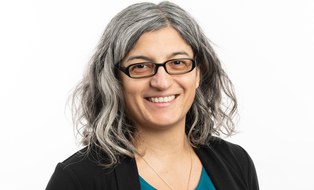 © Sven Ellger/TUD
© Sven Ellger/TUD
Advice on studying abroad
NameMs Federica Serra
Infocenter/ Study abroad; TUDworldwide: America
Send encrypted email via the SecureMail portal (for TUD external users only).
Visiting address:
Fritz Foerster Bau, Office 161 Mommsenstraße 6
01069 Dresden
Postal address:
TUD Dresden University of Technology International Office
01062 Dresden
Office hours:
- Tuesday:
- 09:30 - 11:30
- 12:30 - 14:30
- Thursday:
- 09:30 - 11:30
Please register at the SCS (FOE, floor 0).
Partner Countries Archive
Have you missed a partner country? Don't worry! Here you can read up on all articles.
|
Europe (Erasmus+) |
|
|
Africa |
|
|
America |
|
|
Asia |
|
|
Australia and Oceania |
|


